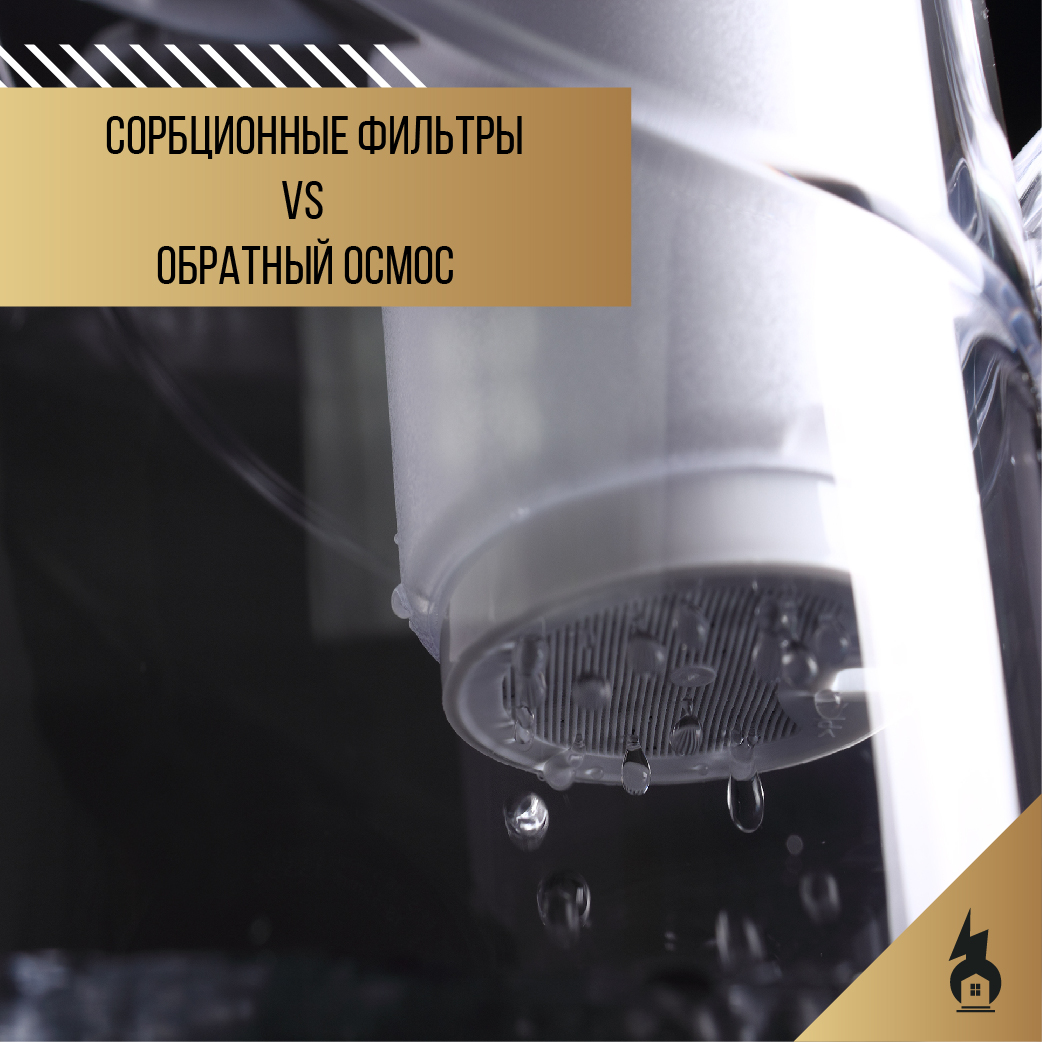Flow-through filters for washing are valued, first of all, for the speed of cleaning - consumers instantly get clean water. ⠀
⠀
🗣 Flow filters have two different cleaning principles. The first is sorption filters. They contain in various sorbents (coal, ion-exchange resin), which adsorb pollution on its surface. The second type is reverse osmosis filters with a membrane whose pores are passed only by water molecules. On this membrane, the water flow is divided into two parts: 20-25% goes to a tap of clean water, the rest goes to drainage. ⠀
⠀
❓ Which system is better? ⠀
Both have strengths and weaknesses. ⠀
⠀
The strong side of reverse osmosis is that it can purify water of virtually any initial composition to the H2O state. There is no alternative to reverse osmosis if you have a very high level of iron in your water (above 1.5 mg / l), nitrates or fluorides, a risk of radioactivity or microbiological contamination, including viruses. ⠀
⠀
➖ At the same time, according to the expert, this design has a number of disadvantages: ⠀
⠀
▪ Water after reverse osmosis filters is absolutely “empty”, it does not contain not only harmful but also useful substances. The use of such water without additional mineralization for a long time is unsafe for health ⠀
▪⠀
Water consumption increases four times, since only one part of the water falls into the tap, and 3-4 parts into the drain ⠀
▪ To “push” water through the membrane, a pressure of at least three atmospheres is required. If there is no such pressure in the pipes, a pump and electricity supply are required ⠀
▪ Such systems are more expensive ⠀
⠀
👍 Unlike reverse osmosis filters, sorption filters can clean ⠀
water only from those contaminants for which sorbent is in their composition. ⠀
⠀
👍 In this list, all pollution typical of tap water: chlorine and its compounds, iron and heavy metals, odor, color, suspended solids, hardness up to 6 mEq / l. At the same time, such filters are cheaper and less sensitive to water pressure at the inlet and leave macronutrients necessary and useful for the body in the water.


 By clicking the "Leave a request" button, you consent to the processing of your personal data and agree to our privacy policy.
By clicking the "Leave a request" button, you consent to the processing of your personal data and agree to our privacy policy.
Write a Comment